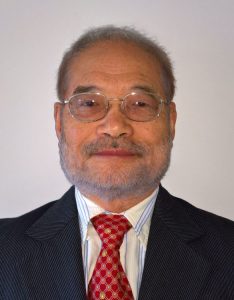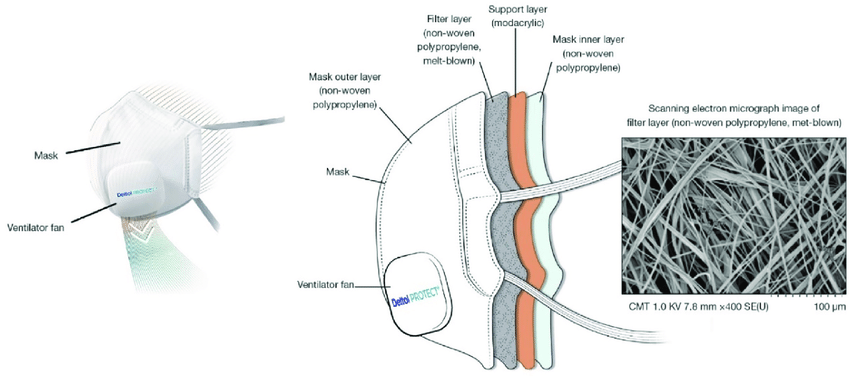3 Dr. Peter Tsai (蔡秉燚): Inventor of the N95 Mask Filter
KC Celestine
[Flesch-Kincaid Grade Level: 8.9]

Dr. Peter Tsai (蔡秉燚) was born on February 6, 1952. He was one of ten children raised in Chingshui, Taiwan on his family’s farm. His family didn’t have enough money to buy toys so Dr. Tsai made his own roller skates from old door rollers. Even as a kid, he had engineering instincts. After graduating high school and completing his two-year military services duties, he attended the National Taipei Institute of Technology. After college he worked at China Textile Testing and Research Center (now Taiwan Textile Institute). He missed doing what he learned in college, so decided to attend a graduate program in the United States. It would take him four years to save up enough to go to the United States.
Dr. Tsai was fortunate to receive full graduate assistantships to pay for the entirety of his studies at Kansas State University in 1981. Despite the long hours of studying, Dr. Tsai also worked at a fish-n-chips restaurant to help make ends meet. He completed over 500 credits in a variety of subjects, such as engineering, mathematics, physics, and chemistry, which “is equivalent to six Ph.D’s,” he said. After earning his master’s degree at Kansas, he went on to earn a doctorate in material science at the University of Tennessee. He later became a professor here.

Dr. Tsai led a research team to develop a material that filtered air by attracting particles through electrostatically charged fibers. In 1992, the team developed a material consisting of both positive and negative charges, attracting particles — such as dust, bacteria and viruses — and trapping 95 percent of them by polarization before they can pass through the mask. Dr. Tsai patented the technology used to make the masks in 1995. He said, “The original intent was to use these charged fibers for air filters, such as home filters.”
The N95 mask was originally designed for construction workers in dusty environments, where it could block micro particles. The U.S. Centers for Disease Control figured out in 1996 that the N95 mask could also attract and block viruses, according to Dr. Tsai. Dr. Tsai’s material was combined with manufacturer 3M’s medical-mask design, which has been used by medical professionals around the world ever since.
Dr. Tsai came out of retirement when the COVID-19 pandemic hit. He worked as much as 20 hour days to develop the most effective way of sanitizing the N95 masks for reuses when supplies were low.
The technology he developed in 1992 is still helping so many.
Writing Prompts
Narrative: Imagine you have the time and resources to study what you love in school or college. Write a story about what you want to study and why it would be beneficial for you to study it. CCSS.ELA-LITERACY.W.6.3
Informative: Research the physics behind N95. Explain in your own words how the technology behind the N95 mask filter works. CCSS.ELA-LITERACY.WHST.6-8.2
Persuasive: There are lots of technology and items that aren’t used as its inventors thought it would be. Above, you learned Dr. Tsai’s technology was originally intended to be used for home filters and the mask was originally designed for construction workers. Did you know Frisbees were originally pie containers and Play-Doh was first used as a wallpaper cleaner? Think of something that isn’t always used as its inventor created it. Write down the reasons why the new use is better or worse. Explain with specific reasons/examples. CCSS.ELA-LITERACY.WHST.6-8.1
Creative/Application: As a kid, Dr. Tsai made his own roller skates since his family couldn’t afford to buy any. Create your own toy. (Here are some crafts that can be created at home.) Once you are finished, go and test your creation.
Works Cited
Andrew, Scottie. “He invented the N95 mask filter. Then the coronavirus pandemic hit and he was called to help once again.” CNN, 16 July 2020, https://www.cnn.com/2020/07/15/health/n95-mask-inventor-coronavirus-sanjay-wellness-trnd/index.html. Accessed 22 July 2022.
Heilpern, Will. “11 famous products that were originally intended for a completely different purpose.” Insider, https://www.businessinsider.com/successful-products-that-were-originally-intended-for-a-completely-different-purpose-2016-3. Accessed 22 July 2022.
“Meet the U.S. scientist who invented the N95 mask filter.” U.S. Embassy in Georgia, 12 Aug, 2020, https://ge.usembassy.gov/meet-the-u-s-scientist-who-invented-the-n95-mask-filter. Accessed 22 July 2022.
Tcharkhtchi, Abbas, et al. (2020). “An overview of filtration efficiency through the masks: Mechanisms of the aerosols penetration.” Bioactive Materials. https://www.researchgate.net/publication/344380305_An_overview_of_filtration_efficiency_through_the_masks_Mechanisms_of_the_aerosols_penetration. Accessed 6 July 2023.
“The Man Behind the Mask.” Tickle College of Engineering, 17 Apr. 2020, https://tickle.utk.edu/the-man-behind-the-mask. Accessed 22 July 2022.
Tsai, Kathy, and Connie Tai. “Our Dad Invented the N95 Mask: Our Taiwanese American Story.” TaiwaneseAmerican.org, 22 Sept. 2020, https://www.taiwaneseamerican.org/2020/09/peter-tsai-n95-inventor. Accessed 22 July 2022.

